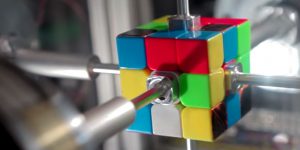
In today’s technically powered world, individuals, businesses, and organizations create a vast amount of data every day. Having rich or high-quality data is crucial. Rich data is an opportunity for organizations to gather more information. However, it is daunting to interpret a huge dataset effectively because the number of datasets or features increases with data size. It leads to overfitting, longer computation times, increased latency, and reduced efficiency of machine learning algorithms. In such a situation, Principal Component Analysis or PCA comes in handy.
Data analysts use the Principal Component Analysis to address the issue. PCA reduces the dimension or input features while retaining original information to a great extent. So, if you want to understand PCA in detail, then read this comprehensive guide. This guide has it all that you need to know about the Principal Component Analysis, including its meaning, how it works, its applications, advantages, and disadvantages. Let’s dig in!
What is Principal Component Analysis (PCA)?
The mathematician Karl Pearson introduced Principal Component Analysis (PCA) in 1901. It is one of the most commonly used machine learning algorithms for reducing the dimensionality of large datasets by transforming large data variables into smaller ones without changing or altering the sample’s information. For this, it uses a statistical procedure that transforms correlated variables into uncorrelated variables with the help of an orthogonal transformation.
In other words, PCA is an unsupervised machine-learning algorithm for finding interrelations among various sets of variables. It is also known as general factor analysis. Because of its high efficiency, it is most commonly used in exploratory data analysis and machine learning for predictive models. It takes a shorter time to perform tasks such as classification or clustering because it divides data into smaller units. This way, PCA enables machine algorithms to efficiently learn from large datasets.
Let’s now understand the workings of PCA. Here we go…
How Does PCA Work?
Here is how Principal Component Analysis works. Read on!
1. Standardization
First off, it is vital to standardize the initial variables if the features of the datasets are available on different scales. Otherwise, PCA can show biased results because it is quite sensitive to the variances of initial variables. By standardizing initial variables prior to PCA, you ensure that every variable contributes to the data classification and regression.
Mathematically, you should subtract the mean and divide by the standard deviation to achieve the results for standardization.
Z=X−μ÷σ
Here, X−μ is value-mean
Σ is the standard deviation.
2. Computation of Covariance Matrix
Calculate the covariance to measure how two or more variables of the larger data set vary from the mean. In other words, it sees the relationship or correlation between them if there is any. It is a vital step of the PCA because it recognizes the redundant information in correlated variables.
Understand that the covariance matrix is a p x p symmetric matrix. Here, p is the number of dimensions. For instance, if there is 3-dimensional data with 3 variables x,y, and z, the covariance matrix will be a 3×3 symmetric data matrix.
Cov (x,x) Cov (x,y) Cov (x,z)
Cov (y,x) Cov (y,y) Cov (y,z)
Cov (z,x) Cov (z, y) Cov (z,z)
Result:
- If the sign of correlated variables is positive, it indicates that two variables increase or decrease together.
- If the sign of correlated variables is negative, it denotes that if the first variable increases, the second decreases, or vice versa.
- If the sign is zero, the two variables are neither directly correlated nor inversely.
3. Compute the Eigenvectors and Eigenvalues
Next, compute the eigenvectors and eigenvalues of the covariance matrix to determine the principal components of data. The eigenvectors represent the directions of the axes where there are maximum variances or principal components of data. The eigenvalues are coefficients that denote the magnitude of variance along with eigenvectors.
4. Create a Feature Vector
Now that you have learned the role of eigenvectors and eigenvalues, find the principal steps. In this step, you can determine which components are of higher importance and should be kept. Also, you learn which variables are of lesser significance or low eigenvalues. The less valued components are often discarded. This way, the remaining significant components form a vector known as a feature vector.
5. Reorient the Data Along the Principal Components
This is the last step of the principal component analysis. It aims to use feature vectors with the help of eigenvectors and eigenvalues of the covariance matrix to reorient the input dataset from the original axes or initial variables to the principal components.
Applications of Principal Component Analysis
Now that you know the meaning of PCA and how the PCA works in machine learning. Let’s understand where to apply the principal component analysis to reduce the large dataset into smaller units while preserving the main information. Some of the common applications of PCA include:
1. Neuroscience
To identify the stimulus properties that enhance the probability of a neuron causing an action response, the discipline of neuroscience uses covariance matrix analysis, a primary type of principal component analysis.
2. Financial Services
In the financial sector, the statistical method of PCA is used to reduce the number of dimensions. The Principal Component Analysis helps streamline complicated financial problems to aid machine algorithms in analyzing and finding insights in no time.
3. Facial Recognition
The eigenface method uses an array of eigenvectors to detect faces. The principal component analysis is typically used in the eigenface method to generate the most likely collection of faces. This way, the PCA simplifies the statistical difficulty of facial image recognition technology while retaining its main characteristics.
Advantages of Principal Component Analysis in ML
PCA offers numerous advantages. Here are some obvious advantages of PCA in ML that illustrate how it transforms large and complex datasets into a more understandable and accessible format:
1. Dimensionality Reduction
Principal Component Analysis is an unsupervised learning technique used for dimensionality reduction. It is the process of reducing the number of initial variables in a large dataset to generalize machine learning models. This way, PCA enables data visualization, streamlines data analysis, and improves performance.
2. Easy to Compute
Since PCA is a linear algebra concept, its algorithms are relatively easy to compute and solve for machine learning. That’s the reason it is one of the most used components.
3. Feature Data Selection
Feature data selection is a critical step in simplifying the complexity of a large dataset. Principal Component Analysis enables feature selection by selecting the most important variables in the dataset. This way, feature data selection improves the predictive accuracy of data classification in machine learning.
4. Speeds Up ML Algorithms
PCA allows machine learning to calculate and compute principal components rather than original input datasets. As a result of this, machine learning algorithms function at an accelerated speed.
5. Eliminate Correlated Variables
PCA identifies correlated variables causing redundant information. It eliminates superfluous variables in the procedure, boosting the efficiency and performance of machine algorithms.
6. Enhanced Data Visualization
Using Principal Component Analysis for data visualization makes the data understandable and readable for users. They can quickly identify patterns and interpret trends and outliers. It is essential in those areas where the high volume of information is difficult to understand without perfect visualization. Therefore, PCA plots high-dimensional data in two or three dimensions, making it easier to analyze and find insight.
7. Multicollinearity
Data-based multicollinearity causes an issue in data regression analysis when two or more independent and biased variables are correlated. PCA helps create uncorrelated and unbiased data analysis that is beneficial for regression analysis.
8. Noise Reduction
Another most notable advantage of Principal Component Analysis is that it ensures noise reduction in data. For this, it replaces the principal components with less significant or low-variance variables. This way, PCA removes those variables that may increase unnecessary sound. It simplifies the underlying structure of the data by improving the signal-to-noise ratio.
9. Data Compression
PCA also helps in data compression. Principal Component Analysis represents the data using a smaller number of principal components. It reduces the data storage capacity and speeds up the machine learning algorithms and operations.
10. Outliers Detection
Another advantage of Principal Component Analysis is its ability to detect outliers. Those data points that are significantly different from other data points in the principal component space are called outliers. Principal Component Analysis looks for data points to recognize outliers. After identifying them, it separates them from data analysis, making sure the efficacy of machine learning algorithms.
11. Prevent Data Overfitting
Because of high-dimensional datasets, regression-based algorithms easily overfit themselves. If you use PCA to lower the size of dimensions, you can prevent the threat of data overfitting in predictive algorithms of machine learning.
Like any other technology, PCA also has some downsides. Read the next section for the disadvantages of Principal Component Analysis. Here we go…
Disadvantages of PCA in Machine Learning
Here are the disadvantages of PCA in machine learning; take a look…
1. Difficulty in the Interpretation of Principal Components
The principal components developed by PCA are the concepts of linear algebra. Sometimes, they become intricate to understand in terms of original variables (in terms of the directions of the axis). Also, PCA may make it difficult for you to interpret the results to others.
2. Data Scaling
Before initiating PCA, it is essential to confirm whether or not the data features are scalable. PCA is highly sensitive to data scaling. If it is not proper, PCA may not work satisfactorily. Hence, it is important to standardize the entire dataset to improve scaling and implement PCA.
3. Lack of Information
However, Principal Component Analysis ensures preservation of information while reducing the size of high-dimensional data. There remains the risk of the loss of significant information during the process. The degree of the loss of information depends on the number of principal components you select for the purpose. Hence, as a data analyst, it is important to identify the principal components to retain the facts and figures.
4. Not Well for Non-Linear Relationships
Principal Component Analysis often assumes that two or more variables are linearly correlated. If there are non-linear relationships between variables, the PCA loses its efficiency to show optimal results.
5. Valuation of Covariance Metrics
The PCA method includes complex statistical calculations such as covariance metrics, eigenvectors, and eigenvalues. These computations are daunting for ordinary people who do not know complex statistical calculations.
Also Read: Advantages and Disadvantages of Data Annotation Tech
In a nutshell…
So, this is all about Principal Component Analysis. PCA is a robust dimensionality reduction technique widely used in machine learning. It helps simplify data while making sure to preserve relevant information in the process. This is one of the most advanced concepts in data analysis, fuelled by the power of machine learning and AI algorithms. It applies simple mathematical formulas to extract the most important information with high dimensionality.
By transforming the data into a set of uncorrelated components, PCA helps in identifying patterns, reducing computational complexity, and mitigating overfitting, especially in high-dimensional datasets. This way, Principal Component Analysis allows data analysts and users to focus on the most meaningful data and make a well-informed decision.
Time for some Frequently Asked Questions regarding Principal Component Analysis. Read on!
FAQs
Q1. Why is the PCA algorithm used?
PCA algorithm simplifies data operations. It converts huge datasets into representative data points that machine algorithms can accurately understand and work with while retaining as much relevant information as possible for optimal results.
Q2. Is PCA supervised or unsupervised?
PCA is an unsupervised learning technique that identifies patterns, trends, and outliers in a high-dimensional dataset. It reduces the dimensionality of the data while preserving most of the information.
Q3. What is the goal of PCA?
The goal of PCA is to use machine-learning algorithms to extract important information from vast datasets and develop principal components that summarize the information.
Q4. What is the difference between PCA and LDA?
PCA is an unsupervised technique that reduces data dimensionality. LDA, on the other hand, is a supervised technique that maximizes variance in categories and minimizes variance in class.
Thanks for reading… 😊 😊






